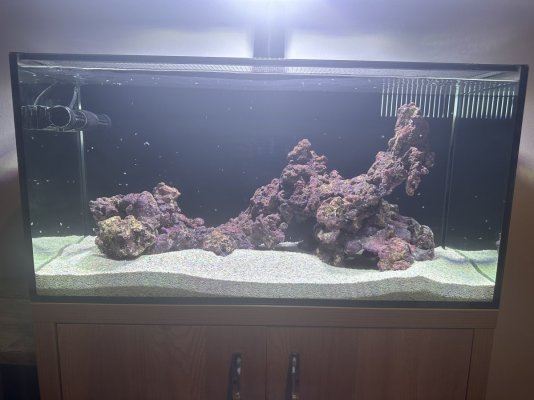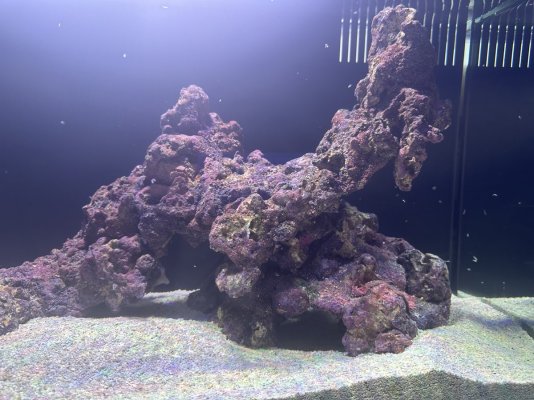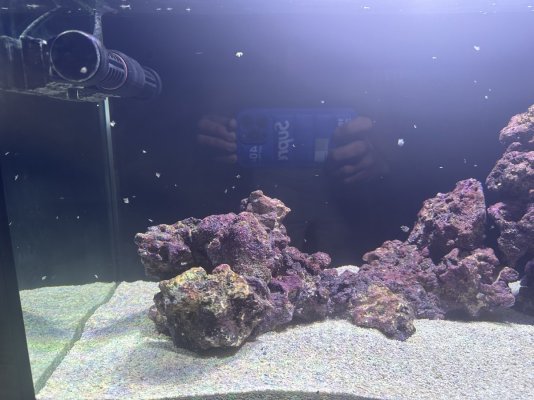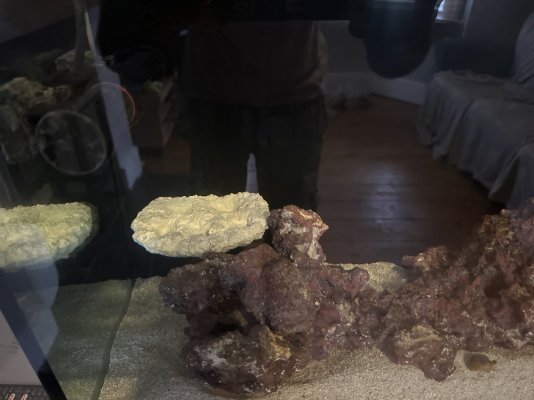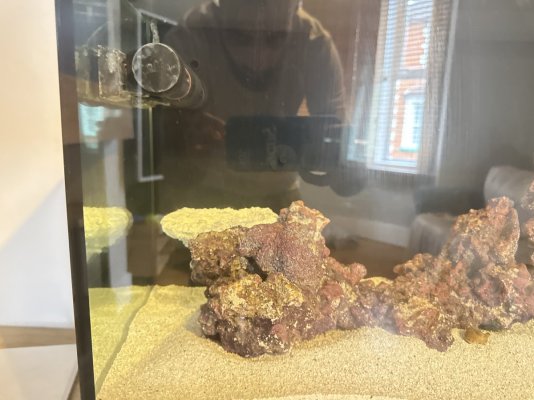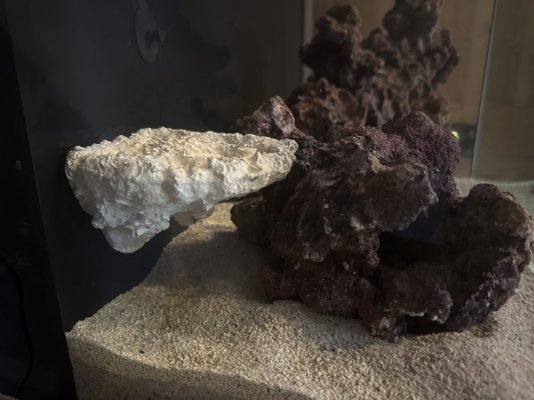So I noticed that my tang had stringy white poop.
He is also started breathing rapidly with his mouth constantly open.
He has been quite active swimming around the tank and eating mysis aswell as seaweed pellets.
I just wanted opinion on wether he looks skinny/stomach pinched in?
I know white stringy poop can be a sign of internal worms or paresites.
unfortunately we don’t have general cure in the UK so I’m currently looking for alternatives.
Not the best pictures I apologise.
Would Fritz coppersafe help at all as I have that to hand?
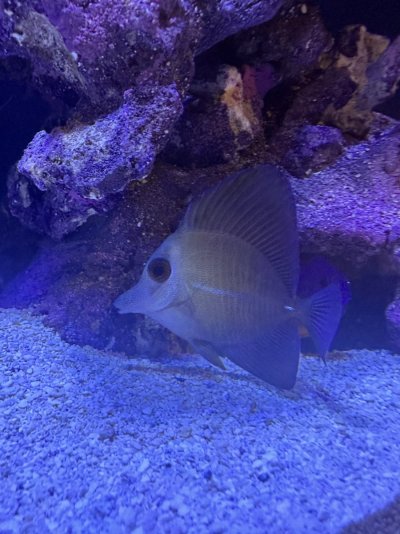
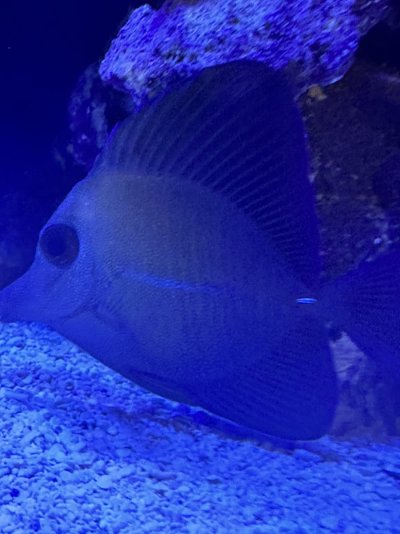
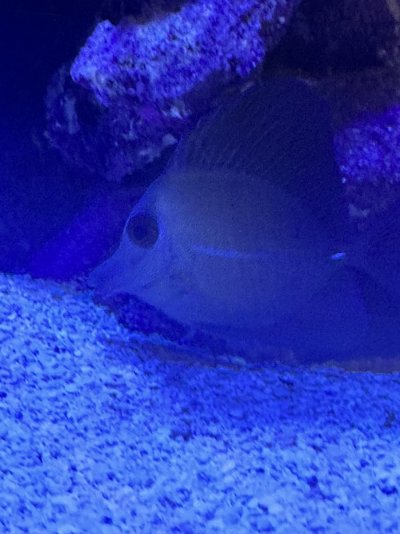
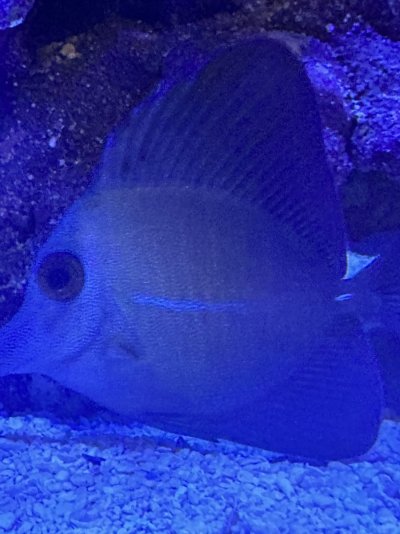
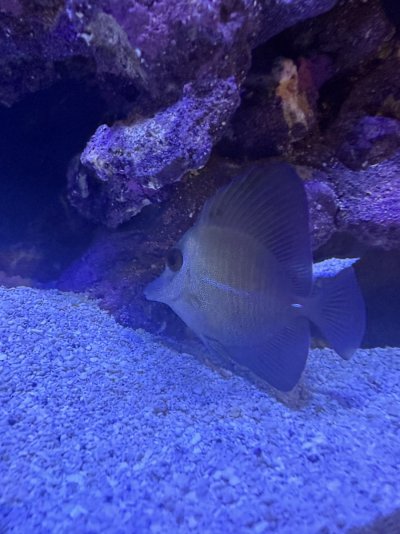
He is also started breathing rapidly with his mouth constantly open.
He has been quite active swimming around the tank and eating mysis aswell as seaweed pellets.
I just wanted opinion on wether he looks skinny/stomach pinched in?
I know white stringy poop can be a sign of internal worms or paresites.
unfortunately we don’t have general cure in the UK so I’m currently looking for alternatives.
Not the best pictures I apologise.
Would Fritz coppersafe help at all as I have that to hand?












